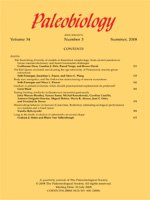Spectral algorithms have been shown to work well in a wide range of situations that involve the task of ordering. When applied to the localities of a set of European Neogene land mammal taxa, spectral ordering relies almost entirely on the most common genera, depends on connectivity more than on length of taxon lists, and is robust to noise from rarer and less connected taxa. The spectral coefficients for localities are highly correlated with known geochronological ages. Although elementary compared with more sophisticated biochronological tools, spectral ordering allows a fast and standardized way to generate biochronological ordering of localities when other information than faunal lists is lacking. Compared with the conventional mammal Neogene (MN) units, spectral ordering of localities appears to lack distinct temporal boundaries in taxon content and render a much lower count of Lazarus events. If, as seems to be the case, biochronology depends mainly on the most common taxa and if evolutionary change is also most clearly reflected in them, then the main evolutionary patterns should be detectable at a modest level of sampling.
How to translate text using browser tools
1 March 2006
Spectral ordering and biochronology of European fossil mammals
Mikael Fortelius,
Aristides Gionis,
Jukka Jernvall,
Heikki Mannila
ACCESS THE FULL ARTICLE

Paleobiology
Vol. 32 • No. 2
March 2006
Vol. 32 • No. 2
March 2006




